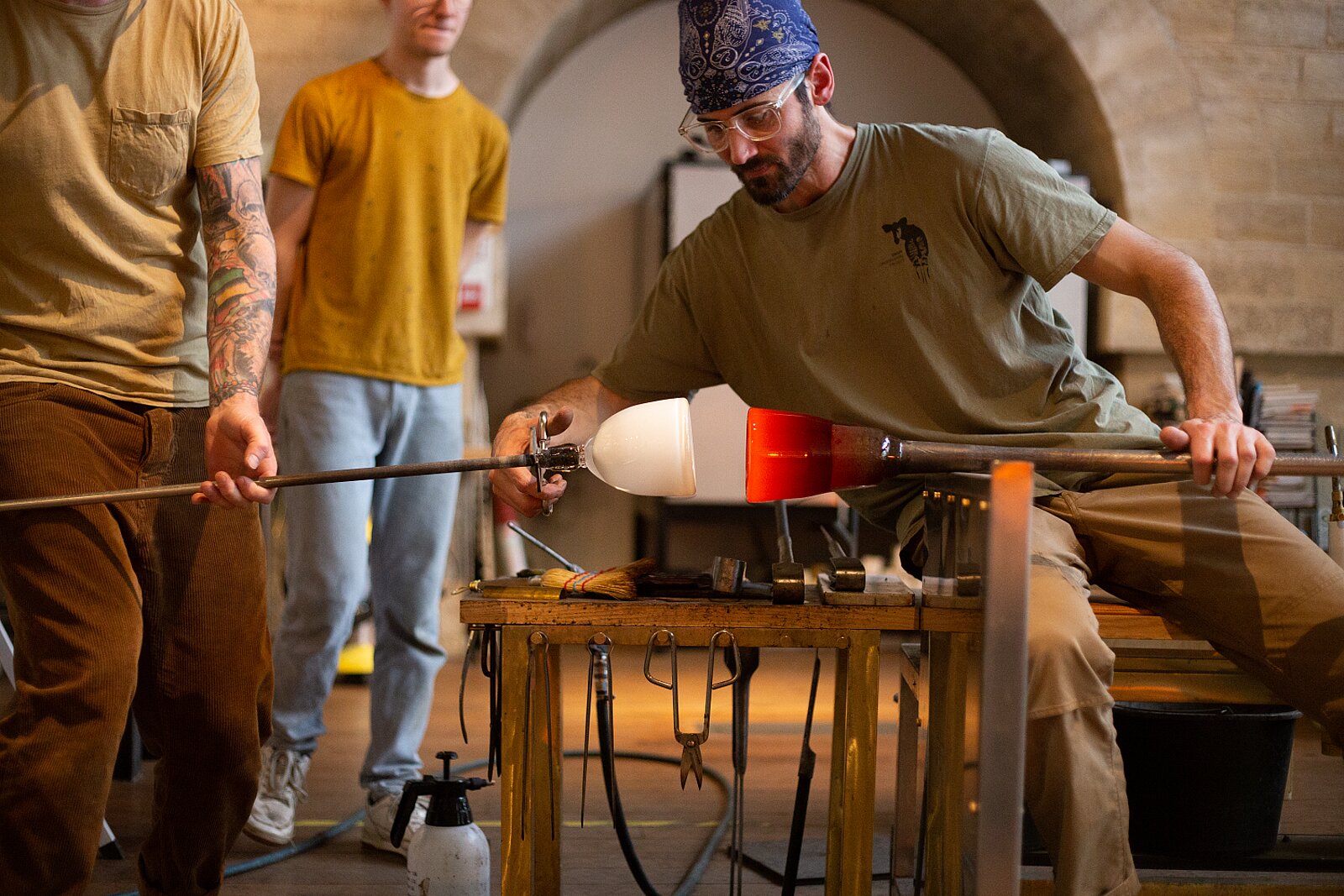Glassblower, the millennial and contemporary breath
Avril 2023 97/101 avenue Daumesnil

There is an activity that can be described as ancestral without any mistake: glass blowing. Always magical, almost mysterious, and spectacular, glassblowing still manages to fascinate again and again; now accompanied by technology.
A thousand-year-old practice
Glassblowing is an ancient craft that dates back thousands of years. The first evidence of glassblowing dates back to about 3500 BC in Egypt and Asia Minor. Like all practices, glassblowing has been subject to trends and fashions. Over time, the technique of glassblowing has been perfected, sophisticated, and refined, especially during the Renaissance in Europe, where glassblowers were considered highly skilled artists.
The trade consists of shaping molten glass by blowing air inside a glass tube to form a glass object. This requires great dexterity, a thorough knowledge of glass chemistry and excellent physical condition to manipulate the heat and molten material. As a sign of evolution, modern glassblowers also use machines to help them blow the glass.
A handicraft that knows how to live with the times
One of the most important innovations in glassblowing has been the use of glass molds. Glass molds allow glassblowers to create precise shapes using a glass mold as a guide for the final shape.
The use of digital technology now plays a key role in the innovation of glassblowing. Glassblowers can now use software to design and simulate the blowing process, allowing them to visualize and correct errors before they even begin blowing.
Finally, the use of more advanced materials for glass production, such as borosilicate glass, has also contributed to innovation in glassblowing. This type of glass is stronger and more durable than other types of glass, allowing glassblowers to create more complex shapes without fear of breaking. These advancements allow glassblowers to create more precise and complex shapes with greater speed and reliability.
A handcrafted art that combines breath and light
The art of glassblowing is considered a practice of great creativity and high manual skill. This craft is a demanding profession, which requires a combination of physical strength, manual dexterity, creativity and patience, meticulousness. Glassblowers must have a keen sense of aesthetics and great dexterity to create intricate and detailed forms using glassblowing. Blow, blow again to create light.
Thus because of the transparency and shine of glass, blown objects can bring out the light inside, giving life to the object and surrounding it with a light that gives a singular atmosphere. Art of the table, luminaries are very appreciated because of this characteristic. A glass wall lamp illuminates an interior in two ways. Certainly it allows the luminosity, but it also creates a style, an atmosphere to these places of life that one reinvested since the confinement.
Glassblowers can use different techniques to control the way light passes through the glass. For example, they may add pigments or colors to tint the glass, or use blowing techniques to create textures and shapes that reflect light in different ways.
The artist can also work with reflective materials, such as mirrors, to create objects that can diffuse light even more dramatically. Thus glass blowing can be used to create objects that capture and diffuse light, bringing the object to life and surrounding it with a soft light. Like JMW Studio, housed at the Viaduc des Arts, which offers "fire pills" or even live in the clouds with its "Cloud" lighting. An invitation to reverie, to contemplation.
Viaduc des arts (1-129 avenue Daumesnil, 75012 Paris)
Paris celebrates 100 years of artisanal excellence! July 202515, 73 et 111 avenue Daumesnil, 75012 Paris
Maison Tassin has moved into the Viaduc des arts May 2025111 avenue Daumesnil, Paris 12
A day in time, where the art of costume meets photography February 202569 avenue Daumesnil, Paris 12
The Viaduc des arts is celebrating this December: discover the program December 20241-129 avenue Daumesnil, Paris 12
Cécile et Jeanne, jewellery creation since 1990 November 202449 avenue Daumesnil, Paris 12
At La Fabrique nomade, refugee artisans reconnect with their craft November 20241bis avenue Daumesnil, Paris 12
Estampille 52, high-end cabinetry November 202491 avenue Daumesnil, Paris 12
Serge Amoruso, high-end leather goods at heart October 202437 avenue Daumesnil, Paris 12


